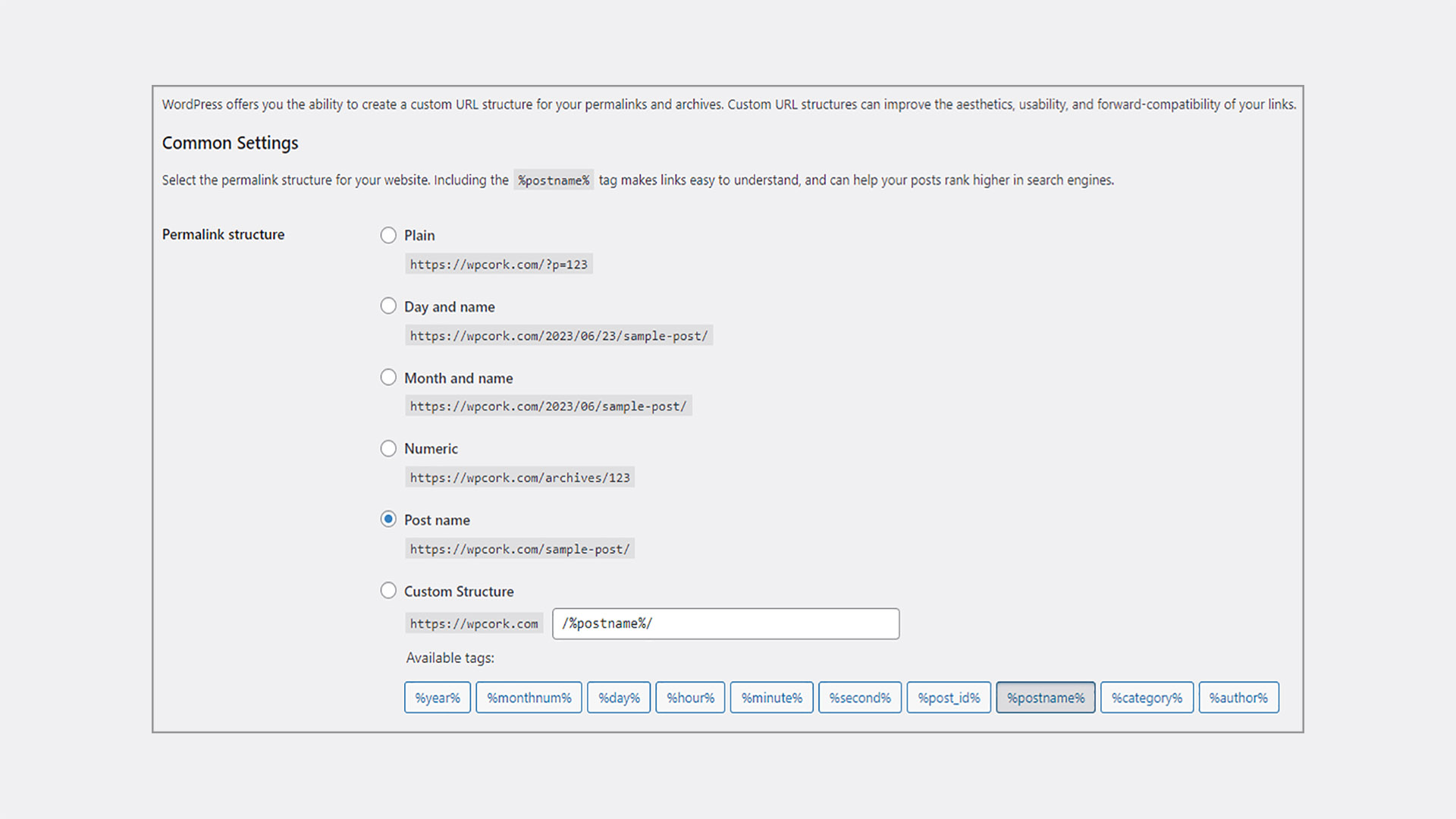Permalinks are the permanent URLs to your individual pages and blog posts, as well as your category and tag archives. They are important for a number of reasons, including:
- They help users find your content. When someone searches for a specific keyword or phrase, your permalinks can help your content show up in search results.
- They help search engines index your content. Search engines use permalinks to understand the structure of your website and to index your content.
- They make it easy for you to share your content. When you share a link to your content on social media or in an email, the permalink will be used.
Permalinks are an important part of any WordPress website. They help users find your content, they help search engines index your content, and they make it easy for you to share your content. By using the right permalink structure, you can improve the SEO of your website and make it easier for people to find your content.
Permalink structure in WordPress
The default permalink structure in WordPress is “Day and name.” This means that the permalink for a blog post would look something like this:
https://www.example.com/2023/06/23/my-first-blog-post/
This structure is not very SEO-friendly, as it does not include the title of the blog post in the permalink. A better option would be to use the “Post name” permalink structure. This would mean that the permalink for the same blog post would look like this:
https://www.example.com/my-first-blog-post/
This structure is more SEO-friendly because it includes the title of the blog post in the permalink. This makes it easier for search engines to index your content and to understand what your content is about.
Another option is to use the “Custom structure” permalink option. This allows you to create your own permalink structure. For example, you could use a structure that includes the category of the blog post in the permalink. This would make it even easier for users and search engines to find your content.
The best permalink option for SEO
The best option for SEO is to use the “Post name” permalink structure. This structure is simple, easy to remember, and easy for search engines to index. It is also the most common permalink structure used by WordPress websites.
However, if you have a large website with a lot of content, you may want to consider using the “Custom structure” permalink option. This allows you to create a more complex permalink structure that can help you organize your content and make it easier for users and search engines to find.
Additional tips for optimizing your permalinks for SEO
- Use short, descriptive permalinks. The shorter and more descriptive your permalinks are, the easier they will be for users and search engines to understand.
- Use keywords in your permalinks. When possible, use keywords in your permalinks that are relevant to your content. This will help your content show up in search results for those keywords.
- Avoid using special characters in your permalinks. Special characters, such as spaces, underscores, and dashes, can cause problems with some search engines. It is best to avoid using these characters in your permalinks.
By following these tips, you can optimize your permalinks for SEO and improve the visibility of your content in search results.


